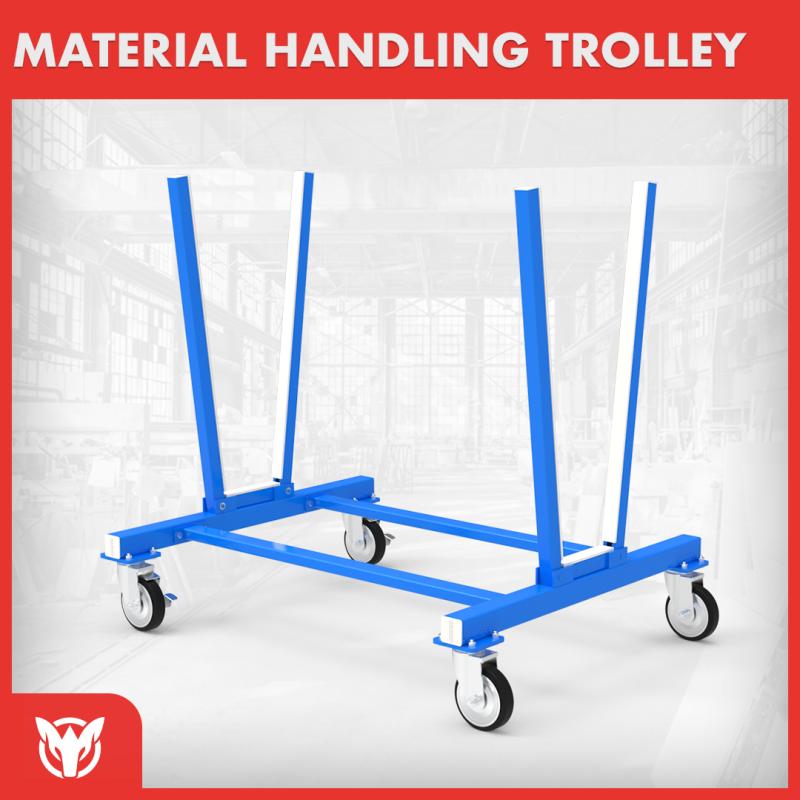



When it comes to boosting efficiency, slashing labor costs, and keeping your workplace safe, the right material handling trolley can make all the difference. With so many options—from basic manual designs to advanced electric models and specialized solutions—the challenge is finding the perfect match for your operations. Let’s dive deep into the factors you need to consider, backed by industry insights and real-world data.
Before you even start browsing, ask yourself some critical questions about your operation:
A trolley’s weight capacity is its most crucial feature. Choose one that comfortably exceeds your heaviest load to avoid wear, downtime, and potential safety hazards.
Industry Insight: Facilities aligning equipment capacity with their workload have reported up to a 30% reduction in downtime and maintenance expenses, according to the Material Handling Industry (MHI) Annual Report.
Different materials require different handling methods. For delicate items—like stone slabs, glass, or ceramics—protective features such as cushioned or rubber-lined surfaces can be a game-changer.
Research Note: A study in the Journal of Safety Research found that using equipment designed for fragile items can reduce damage-related losses by over 25%.
Consider how often and how far you need to move items. High-volume environments may demand more robust, even electric, trolleys, while occasional moves might only require a manual solution.
Manual Trolleys
Manual trolleys are straightforward, cost-effective, and easy to maintain—ideal for light to moderate loads and short-distance moves.
For heavy loads or long distances, electric trolleys deliver motorized assistance to cut down on manual effort and speed up operations.
Data Point: Research indicates that using electric trolleys in busy warehouses can boost productivity by up to 35%.
If your operation involves handling delicate stone slabs—like granite, marble, or quartz—you need a specialized material handling trolley. These models, often known as granite trolleys, stone trolleys, stone dollies, granite slab trolleys, or stone carts, come equipped with features like adjustable posts, flip mechanisms, and protective rubber linings.
Industry Report: Facilities using these specialized trolleys have seen material wastage drop by as much as 40%, leading to considerable cost savings and improved sustainability.
The design of your trolley isn’t just about aesthetics—it’s about functionality in your workspace.
Comfort is key. Look for trolleys that offer well-designed handles, adjustable controls, and ergonomic features to minimize operator strain.
OSHA Insight: Ergonomic equipment can reduce musculoskeletal disorders by 20-25%, creating a healthier work environment.
Mobility is critical in crowded spaces. Swivel and locking wheels provide a balance of movement and stability, making it easier to navigate tight corners and busy work areas.
For compact facilities, choose a trolley that maximizes maneuverability without compromising load stability. A well-designed trolley will seamlessly fit into tight corridors while still handling substantial weights.
Investing in durable equipment pays off over time. The construction quality and ease of maintenance can significantly influence your total cost of ownership.
Opt for trolleys built from robust materials like welded steel or high-grade aluminum. A protective finish—such as epoxy—can extend the equipment’s lifespan by shielding it from daily wear and environmental damage.
Select designs that are simple to service and repair. Lower maintenance demands translate to reduced downtime and operating costs.
Study Highlight: A comparative review of industrial equipment maintenance noted that premium trolleys had 30% fewer repair incidents over five years compared to lower-end models.
Cost isn’t just the purchase price—it’s the long-term value you get from your investment.
Weigh the initial cost against potential savings from improved productivity, reduced labor, and lower maintenance expenses.
Financial Insight: Companies investing in higher-quality equipment with longer lifespans often see a faster return on investment due to fewer interruptions and reduced repair costs.
A robust warranty—such as a 12-month guarantee—provides crucial peace of mind. It demonstrates that the manufacturer stands behind their product, offering dependable support if issues arise.
Your operational environment plays a significant role in your decision-making process.
Determine whether your trolley will be operating indoors, outdoors, or in a hybrid setting. Environmental factors like floor conditions, weather, and traffic patterns should influence your choice.
For high-traffic facilities, select a trolley engineered for continuous, heavy-duty performance. In less intensive settings, a simpler model may suffice.
Efficiency Data: Research shows that matching your trolley to the environment can boost overall operational efficiency by up to 25%, especially in complex industrial settings.
Choosing the right material handling trolley is more than just a purchase—it’s an investment in the future of your operations. The right trolley enhances safety, boosts efficiency, and delivers long-term cost savings. By carefully considering factors like load capacity, ergonomics, durability, and fit with your work environment, you can make a choice that drives productivity and protects your bottom line.
Whether you’re opting for a manual model for light tasks, an electric variant for heavy lifting, or a specialized solution for handling delicate stone materials, the data and industry insights speak for themselves. Make the decision that best suits your needs and transform your material handling operations today.
Disclaimer:
This article is for general informational purposes only and isn’t meant as professional advice. While we strive for accuracy, we can’t guarantee complete applicability to your situation—always consult a qualified professional before making any decisions.
Sign up to receive the latest info on new Aardwolf products, special offers and more.
By signing up you agree to receive emails from Aardwolf with news, special offers, promotions and other information. You can unsubscribe at any time.